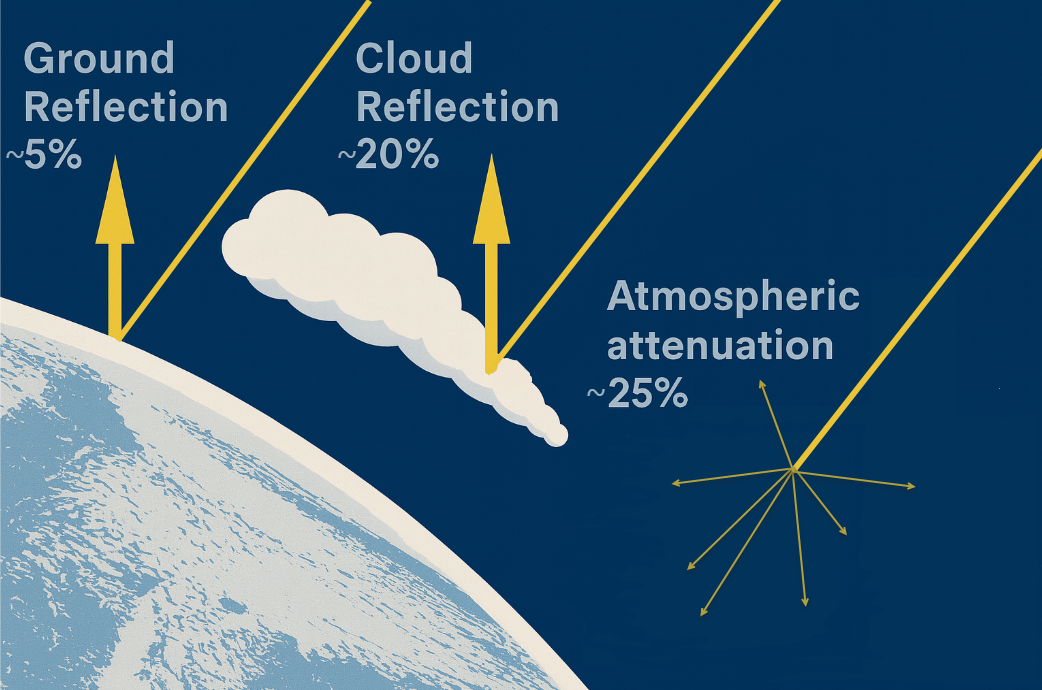Factors influencing solar heat flux
The interaction of solar radiation with the Earth's atmosphere and surface is governed by three main groups of factors that influence solar heating in thermal models, including geometric, terrain, and atmospheric effects.
These factors determine how solar energy is modified before reaching a surface and must be accounted for in thermal models. Collectively, they influence the amount, direction, and spectral quality of incoming radiation and can be computed with varying degrees of precision using astronomical and environmental data.
- Earth's position
-
The position of the sun relative to the Earth affects the solar incidence angle and duration of exposure through the following factors:
- Declination refers to the seasonal variation in the sun’s angle relative to the equator, affecting solar intensity.
- Latitude determines the maximum solar elevation and daily solar path, influencing total irradiance.
- Solar hour angle describes the sun’s position throughout the day, used to compute time-dependent solar flux.
- Terrain and surface orientation
-
Surface geometry affects how much solar radiation is intercepted and absorbed. The following factors influence view factors and incident angle calculations and can be modeled with high accuracy.
- Elevation refers to the vertical distance above sea level and affects solar radiation levels. Higher altitudes receive more radiation due to the shorter atmospheric path.
- Surface inclination and orientation are defined by the tilt and azimuth angles of a surface, which influence the angle at which solar rays strike and thus the intensity of irradiance received.
- Shadows result from obstacles that block direct sunlight, necessitating shadow modeling to accurately predict heat flux.
- Atmospheric Attenuation
-
As solar radiation travels through the atmosphere, it is scattered and absorbed by gases, solid and liquid particles, and clouds reducing the energy that reaches the surface. Because of the atmosphere’s dynamic nature and complex interactions the atmospheric attenuation can only be modeled with limited accuracy. The primary contributors to atmospheric attenuation are:
- Gases—Attenuation by gas constituents describes clear, dry Rayleigh atmosphere and is given by the relative optical air mass and optical thickness. These parameters can be determined with a good level of precision.
- Particles—Attenuation by solid and liquid particles is described by the Linke turbidity index (TLK), which indicates the optical density of a hazy and humid atmosphere in relation to a clean and dry atmosphere. Because turbidity varies with time and location, its calculation often requires generalization.
- Turbidity variation—Turbidity typically increases in summer and decreases in winter. Its values vary by location and are influenced by terrain elevation. Maximum solar radiation occurs when the sky is clean and dry,while aerosols reduce it.
- Clouds—Clouds are the most significant attenuators. A theoretical analysis of cloud attenuation requires detailed data on cloud thickness, position, number of layers, and optical properties.

The thermal solver combines these factors to compute net solar heat flux on surfaces, which is then used as a boundary condition in heat transfer equations.
